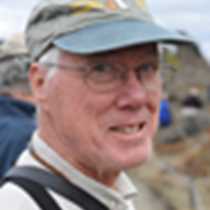Into the Arctic: Bear Island
Coastal Norway, where we spent the first half of our trip, is bathed by relatively warm north-flowing water that originates as the Gulf Stream and continues as the North Atlantic Drift. Two days ago, we were at Tromsø, at a latitude comparable to northernmost Alaska but surrounded by forest of birch and pine. Now, traveling northward, we transition into the true Arctic. Yesterday evening, after a smooth transit over the Barents Sea, we arrived at Bear Island. It is considered a part of the Svalbard Archipelago, but isolated from the rest of the islands to the north. Bear Island was first seen and recorded by Dutch sailors traveling with Wilhelm Barents in 1596. Days later, they found the island of Spitsbergen farther north. They killed a polar bear off its shore, hence the name.
At Bear Island, the relatively warm north-flowing current meets a colder current coming from the east. This often produces foggy and turbulent conditions. We were lucky. No such thing today. The steep-sided, flat-topped island of stood out in Arctic glory. The sedimentary layers of Old Red Sandstone break off into vertical cliffs that provide nesting ledges for seabirds—a 2,000-foot high avian condominium. We are here early in the breeding season. Incredible hordes of black and white murrres, both common and thick-billed, were massed on the water beneath the cliffs, as the birds sort themselves into breeding pairs. Each female forms a single egg, and the pair gets on with the important task of raising their chick of 2012. It is a formidable task, taking all of the coordinated efforts of the two parents. They must keep the single, large egg on a narrow ledge through incubation, protecting it from marauding predators: glaucous gulls, black-backed gulls, and great skuas. Our Zodiac cruises witnessed that side of nature, as a glaucous gull consumed a newly killed kittiwake and skus attacked a murre that they had somehow recognized as vulnerable. Unlike the ledge-nesting murres, black-legged kittiwakes glue their nests onto seemingly vertical cliff faces, providing some protection from the predatory birds. We watched them gathering algae from the rocks near the waterline and carrying it away to add to their nests. The sheer abundance of nesting birds attests to the high productivity of the surrounding seas.
In the afternoon, we took our first walk over the Arctic tundra. It was a bit of a scramble to reach the flat surface above, but then walking was easy (as long as we remembered to avoid the boot-sucking mud of wet mires.) For some reason, large groups of kittiwakes wheeled about and, far above us, tiny dovekies flew around their nest sites on steep talus-covered slopes, chittering incessantly. Perhaps it is a form of social stimulation as these colony-nesting seabirds work themselves into a mutual, coordinated breeding frenzy. The first flowers of the season—bright clumps of purple saxifrage—dot the mossy tundra as life returns to the landscape after the long quiet of the Arctic winter.




